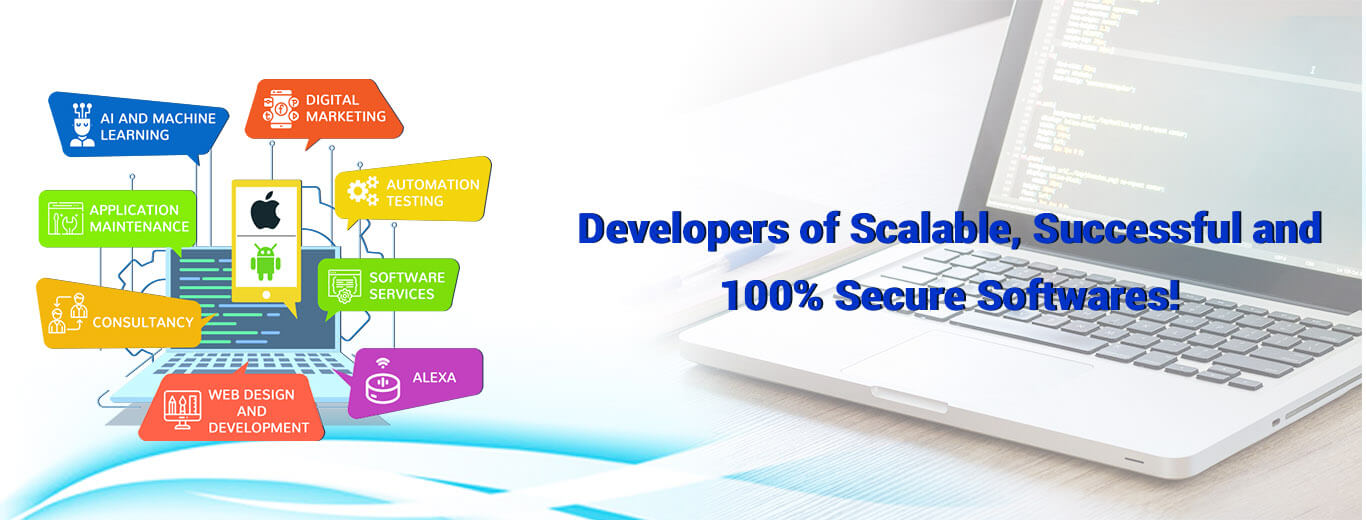In today’s fast-evolving digital landscape, businesses are continuously seeking the most efficient and scalable ways to build and manage software applications. Two major architectural styles dominate discussions: Microservices Architecture and Monolithic Architecture. Choosing the right one can make a significant impact on a project’s success, scalability, and maintenance.
In this blog, we’ll dive deep into the benefits and challenges of each approach, the best use cases for microservices, and how to transition from monolithic to microservices.
What is Monolithic Architecture?
Monolithic Architecture refers to a traditional model of software development where all components of an application are interconnected and interdependent. In this model, the application is built as a single unit.
Benefits of Monolithic Architecture
*Simplicity: Monolithic applications are easier to develop and deploy initially, especially for smaller teams.
*Performance: Communication between components happens internally, making it faster compared to external API calls in microservices.
*Easier Debugging and Testing: Since everything is bundled together, it’s simpler to run end-to-end testing.
*Straightforward Deployment: A single file or directory is deployed, simplifying the software deployment process.
Challenges of Monolithic Architecture
*Scalability Limitations: Scaling a monolithic app often means replicating the entire application, even if only one part needs more resources.
*Code Complexity: As applications grow, maintaining a monolithic system becomes harder, increasing the risk of bugs and regressions.
*Slower Development Speed: Any change requires redeploying the entire application, slowing down development cycles.
*Technology Lock-in: It’s harder to adopt new technologies without refactoring large parts of the codebase.
What is Microservices Architecture?
Microservices Architecture breaks down an application into smaller, independent services, each responsible for a specific functionality. These services communicate with each other through APIs.
Benefits of Microservices Architecture
*Scalability: Each microservice can be scaled independently based on its needs.
*Flexibility: Different microservices can use different programming languages, databases, and technologies.
*Faster Development and Deployment: Teams can work on different services simultaneously, enabling continuous deployment.
*Resilience: Failure in one service does not necessarily bring down the entire system.
*Better Maintainability: Codebases are smaller and easier to understand, leading to fewer bugs.
Challenges of Microservices Architecture
*Increased Complexity: Managing multiple services requires a sophisticated DevOps and cloud infrastructure strategy.
*Data Management: Data consistency becomes challenging when multiple services have their own databases.
*Communication Overhead: Services need to communicate over the network, which can add latency and require robust API management.
*Security Risks: More services mean more potential vulnerabilities, requiring strong security best practices.
Best Use Cases for Microservices
Microservices Architecture shines in certain types of projects:
1. Large-Scale Applications: Applications like Netflix, Amazon, and Uber use microservices to scale different parts independently.
2. Agile Development Environments: If you have multiple teams working in parallel, microservices promote faster feature rollouts.
3. Cloud-Native Applications: Applications designed for the cloud greatly benefit from microservices and containerization.
4. E-commerce Platforms: Different modules like payment, inventory, and customer service can operate independently.
5. IoT Applications: Devices and services can operate independently while communicating through APIs.
How to Transition from Monolithic to Microservices
Transitioning from monolithic to microservices architecture is not just about changing code—it’s a shift in mindset, team structure, and infrastructure. Here’s a step-by-step approach:
1. Assess and Plan: Understand the current monolithic system, identify bottlenecks, and plan your microservices roadmap.
2. Adopt a Domain-Driven Design: Break down your application based on business capabilities or domains.
3. Start Small: Begin with the least complex, most critical service and gradually move others.
4. Build APIs: Enable seamless communication between services using REST APIs, gRPC, or messaging queues.
5. Implement DevOps and CI/CD: Automate your build, test, and deployment pipelines for faster delivery.
6. Use Containers and Orchestration: Tools like Docker and Kubernetes simplify the deployment and scaling of microservices.
7. Monitor and Secure Services: Set up centralized monitoring, logging, and security practices across all services.
Pro Tip: Make sure your team is trained in cloud computing, API development, and DevOps best practices to ensure a smooth transition.
Choosing between Microservices Architecture and Monolithic Architecture depends on your project’s size, complexity, team structure, and future growth plans.
*Monolithic applications work best for small, simple projects where rapid initial development is crucial.
*Microservices architecture is ideal for large, complex, and scalable systems requiring flexibility and resilience.
At iT Gurus Software, we specialize in helping businesses architect the best solution for their needs. Whether you’re building a project from scratch or transitioning to microservices, our team ensures seamless implementation backed by deep expertise in cloud computing, DevOps services, API development, and enterprise software solutions.
Ready to modernize your architecture?
Connect with iT Gurus Software today and future-proof your business!


Leave a Reply